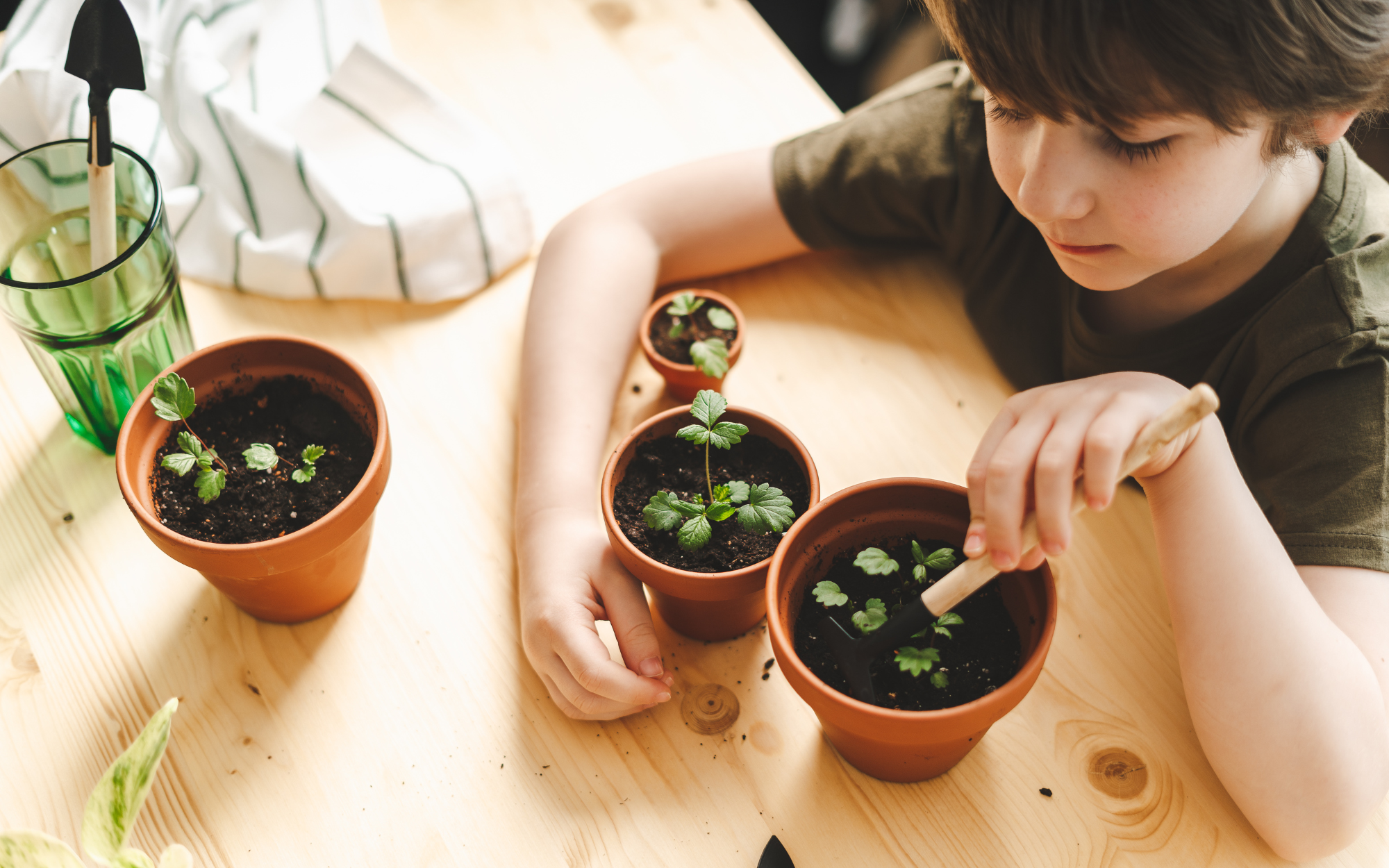As parents and caregivers, we’re always searching for creative ways to engage our children in activities that are not only fun but also beneficial for their sensory development. One such activity that checks all the boxes is the Seed Planting Sensory Craft. This simple yet effective craft helps children engage multiple senses and can be an excellent tool for those receiving ABA therapy or autism behavior support. Whether you’re looking to enhance your child’s sensory integration or simply create a calming, hands-on project, this craft is an ideal choice.
What is the Seed Planting Sensory Activity?
The Seed Planting activity involves planting seeds in small pots and watching them grow over time. This activity allows children to engage with tactile, visual, and olfactory sensory experiences in a fun and educational way. By including tactile elements like soil and seeds, as well as the ability to visually observe plant growth, children have a multi-sensory experience that helps with various developmental goals. Additionally, the earthy smell of the soil can provide an olfactory stimulation, helping children tune into their environment in a more mindful way.
Materials Needed
To get started with your Seed Planting, gather the following materials:
- Small pots: These can be plastic, clay, or any container of your choice. Each child can have their own pot to personalize.
- Soil: A sensory-rich material, soil is perfect for tactile engagement.
- Seeds: Choose seeds that are easy to plant and quick to grow, such as beans or flowers. Watching the growth process can be both exciting and rewarding.
- Decorative elements: These can be anything from paint, stickers, or ribbons to decorate the pots. You can also encourage children to make their pots unique with their own artistic flair.
Sensory Elements Involved
-
Tactile:
- Feeling the soil, the small seeds, and the texture of the pot provides a rich tactile experience. The physicality of touching and digging into the soil helps improve fine motor skills and hand-eye coordination. For children with autism, sensory activities like this can be grounding and help with self-regulation.
-
Visual:
- The process of planting seeds and watching them sprout over time provides a powerful visual sensory experience. For children receiving ABA services, watching a plant grow serves as a great opportunity for goal-setting, as it helps them see the results of their efforts. It also promotes patience and attentiveness.
-
Olfactory:
- The earthy smell of the soil adds a pleasant and calming olfactory element to the experience. Smelling the soil can help children with autism become more aware of their environment, engaging their senses in a deeper way.
Benefits of the Seed Planting Sensory Craft
1. Improves Focus and Attention
Through the planting process, children practice following a series of steps. This fosters attention to detail and concentration, important skills for children with autism. The visual process of watching the plant grow offers a sense of accomplishment, reinforcing the importance of staying focused.
2. Encourages Calm and Self-Regulation
Sensory activities like planting can be soothing. The tactile interaction with the soil, combined with the earthy smell, creates a calming atmosphere. Children receiving ABA therapy can benefit from activities like this as it offers them a sensory break and helps with self-regulation.
3. Promotes Fine Motor Skills
Handling small seeds, digging into the soil, and transferring materials into the pot help strengthen fine motor skills. These activities are excellent for children who are working on hand-eye coordination and dexterity.
4. Supports Sensory Integration
Sensory integration is an essential part of childhood development, especially for children with autism. The multi-sensory experience of the Seed Planting Sensory Craft helps children engage their senses in an intentional way. For those undergoing ABA therapy, sensory crafts like this can be incorporated into a broader behavioral plan to work on specific sensory processing goals.
5. Fosters Patience and Responsibility
As children watch their seeds grow over time, they learn patience and the importance of caring for something over an extended period. This sense of responsibility is incredibly rewarding and helps build a sense of accomplishment.
Integrating the Activity into ABA Therapy
ABA therapy is widely recognized for its structured approach in helping children with autism develop skills and reduce challenging behaviors. Sensory activities like Seed Planting can easily be incorporated into ABA services. By setting clear goals related to sensory engagement, fine motor skills, and self-regulation, this activity can be tailored to meet individual therapy goals. The visual and tactile aspects of the activity also provide meaningful reinforcers, which can be used as positive feedback during autism behavior support sessions.
By engaging children in tactile, visual, and olfactory experiences, it supports the development of essential skills like focus, fine motor coordination, and sensory processing. Whether your child is receiving ABA therapy or simply looking for a fun, hands-on project, this craft can be a therapeutic and rewarding experience. Plus, watching a plant grow is a beautiful reminder of the small steps that lead to big changes—a perfect analogy for the progress children make in their therapeutic journey.
If you’re interested in learning more about how ABA therapy can benefit your child, or if you have any questions, please don’t hesitate to contact us. We’re here to help you on this journey. Give us a call at (855) 444-5664 to get started!
Spring into sensory friendly fun at our blog like making DIY Windchimes, Paper Plate Butterflies and Handprint Flowers!


